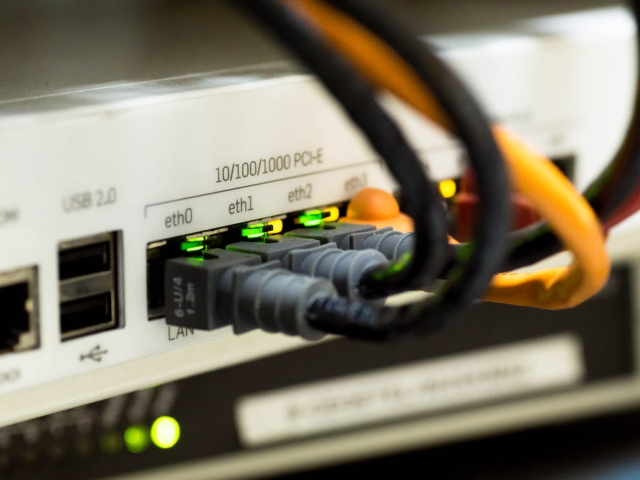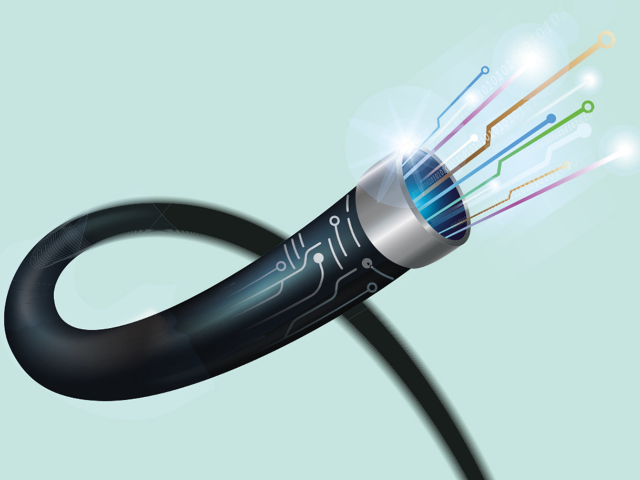
-
fibre
-
South Africa’s Best-Rated Internet Service Provider Has Some Epic Deals This Black Friday
27 Nov 2024 by Tayla / No Comments
RSAWEB’s Black Friday deals offer unbeatable value, exceptional savings and exclusive rewards.
-
How To Score 50% Off Home Fibre
02 Dec 2022 by Jasmine Stone / No Comments
For homes with multiple devices connected at the same time, it pays to have a high-speed connection that can handle the load.
-
Still Haven’t Made The Switch To Fibre? Here’s Why You’re Missing Out
14 Nov 2022 by Jasmine Stone / No Comments
Nowadays, the first thing most people entering your house will do is ask for the WiFi password. Your line speed better be quick enough to handle the load.
-
Why Fibre Is So Much Quicker Than ADSL
20 Sep 2022 by Jasmine Stone / No Comments
A jacked-up ADSL connection can offer decent speeds for browsing the web and low-strain online activities. Fibre is where the real power is at.
-
Crazy Deal Alert – R295 For Uncapped 35Mbps Home Fibre
25 Jul 2022 by Jasmine Stone / No Comments
In 2022, we are always online with multiple devices and the speed of connection required to keep a household ticking over has multiplied.
-
Price Comparison For Super-Fast 100Mbps Fibre
09 May 2022 by Jasmine Stone / No Comments
For those who need a super-fast connection at home, perhaps for transferring large files, or at the office, you’ll be looking at speeds of around 100Mbps.
-
A Quick Look At SA’s Most Affordable Fibre Network
04 Apr 2022 by Jasmine Stone / No Comments
Given the rising cost of just about everything these days, we’re all looking at ways to save a little wherever possible, including home fibre.
-
Ranked: SA’s Best Internet Service Providers
07 Mar 2022 by Jasmine Stone / No Comments
MyBroadband has ranked 16 South African ISPs, as well as 12 smaller local ISPs.
-
This Tool Shows The High-Speed Fibre Packages Available In Your Area
14 Feb 2022 by Jasmine Stone / No Comments
When it comes to sorting which high-speed home internet connection you should bank on, it can be hard to know where to start when looking.
-
Keen To Stream In 4K High-Def? These Are Your Cheapest Fibre Options
31 Jan 2022 by Jasmine Stone / No Comments
The days of watching a crummy quality, pixelated download of a movie your friend gave you on a flash drive should be long gone.
-
Running A Speed Test On Your Home Internet Is Really Easy
04 Nov 2021 by Jasmine Stone / No Comments
Call me old-fashioned, but if I’m paying for a 20mbps (megabits per second) home fibre line, I want to actually get that speed.
-
New Name Tops SA’s Best Internet Service Provider Rankings
18 Oct 2021 by Jasmine Stone / No Comments
We’ve come to expect the likes of Eskom to drop the ball, but the same cannot and should not be said about our internet service providers (ISPs).
-
The Internet Speed Record Has Been Obliterated
05 Aug 2021 by Jasmine Stone / No Comments
This record required far less athletic prowess than the ones we’ve seen in Tokyo, but it’s still a very impressive feat.
-
Comparing SA’s Cheapest Home Fibre Deals
08 Jul 2021 by Jasmine Stone / No Comments
Multiple screens, sport, Netflix, the news, another 8PM address from President Ramaphosa, and endless scrolling through social media while we’re stuck indoors. You’re going to need decent fibre to stay sane.
-
SA’s Best Fibre Providers Ranked
09 Jun 2021 by Jasmine Stone / No Comments
Sitting in the dark, or losing power in the middle of the workday, is just about manageable if you can stay connected. To do that, you’ll also need a solid internet service provider (ISP), and not all are created equal.
-
Five Reasons To Upgrade Your Home Fibre Speed
09 Apr 2021 by Jasmine Stone / No Comments
Life’s too short to spend time waiting for things to buffer, but when you have multiple devices connected and they’re all hard at work, Fibre speed can be an issue.
-
Setting Up Home Fibre? Check Out These Promotions First
10 Mar 2021 by Carrie / No Comments
If you like lightning fast internet and great savings (who doesn’t?), then now is the perfect time to finally upgrade to Fibre.
-
It’s Cheaper To Get Fibre, Netflix, And Amazon Prime Than DStv
19 Feb 2021 by Carrie / No Comments
DStv prices are on the rise at around the same time that some ISPs have slashed theirs, which isn’t good news for MultiChoice.
-
Finally Upgrading To Home Fibre? Check This Out
03 Feb 2021 by Carrie / No Comments
It’s 2021, we’re more reliant on technology than ever before, and we should probably talk about that lagging internet connection you’re still using.
-
MyBroadband Ranks South Africa’s Best Internet Service Providers
14 Jan 2021 by Jasmine Stone / No Comments
Consider this yet another reminder that not all ISPs are created equal, and you deserve a decent connection at home.
-
Keen To Switch From ADSL To Fibre? Check This Out
03 Dec 2020 by Jasmine Stone / No Comments
In parts of the country, more and more copper cable infrastructure is being removed each day, so perhaps it’s time to switch to fibre.
-
LTE, Fibre, ADSL – You Should Know The Difference
06 Nov 2020 by Carrie / No Comments
We all want fast, efficient internet, but aren’t always clued up on some of the jargon. Let’s break it down.
-
RSAWEB Is Currently Running Some Great Fibre Promotions
05 Oct 2020 by Jasmine Stone / No Comments
If you’re in the market for a new home fibre connection, or want to see if you’re currently paying a little over the odds, have a quick gander at RSAWEB’s latest promotional offers.
-
Netflix In One Second – Behold, The Fastest Internet Ever
25 Aug 2020 by Jasmine Stone / No Comments
We’ll all be glad to see the back of buffering for good, but a connection fast enough to download the entire Netflix library in one second is next-level stuff.
-
Final Chance To Score A Free Month Of Fibre [Video]
03 Jul 2020 by Jasmine Stone / No Comments
A house isn’t a home until there’s a high-speed internet connection up and running, and that’s especially true now that we spend so much time indoors, using multiple connected devices at any given time.
-
Top Tech CEO On Why COVID-19 Will Change How South Africans Work
15 Jun 2020 by Carrie / No Comments
Many thought that remote working was still a good few years from replacing more traditional work models, but nobody could have predicted what 2020 had in store.
-
Online Tool Shows Which High-Speed Fibre Packages Are Available In Your Area
07 May 2020 by Jasmine Stone / No Comments
As we face up to the reality that working from home could be a very long-term thing, a decent internet connection is more important than ever.
-
Throttling, Shaping, And Contention Ratio – What They Mean For Your Internet Speed
11 Feb 2020 by Jasmine Stone / No Comments
Not all internet connections and contracts are created equal, and there are some important terms to understand before you sign on the dotted line with a new internet service provider.
-
The Black Friday Fibre Special You’ve Been Waiting For
29 Nov 2019 by Carrie / No Comments
It really is time you made the move to fibre. From now until the end of Monday, here’s your chance to score a great deal whilst doing so.
-
Load Shedding Tip – How To Ensure Your Internet Stays Connected
15 Nov 2019 by Carrie / No Comments
Unfortunately, load shedding is here to stay, but that doesn’t mean that you can’t stay connected, online, and active when the lights go out.
-






















































